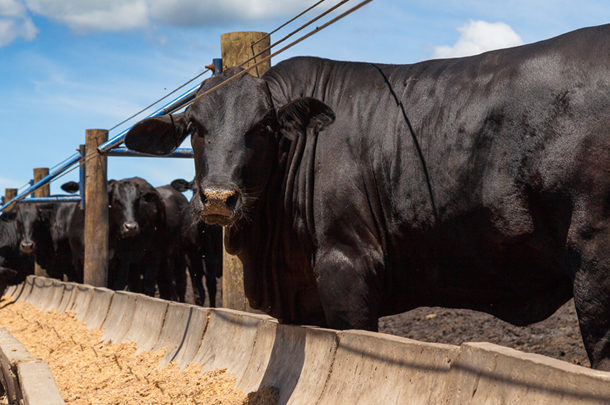Feeder cattle suffering from heat stress don't perform well. They eat less and gain less, and in extreme cases, we can see mortality. As a result, economic losses can be devastating. Dealing with problems related to heat stress costs the American beef industry an estimated $500 million annually.
Planning ahead and updating management best practices go a long way in helping reduce the risk of heat stress. A little time and effort now can prevent lost productivity and money later.
Factors that can increase the risk of heat stress
Heat stress happens when cattle can't release excess body heat efficiently enough to stay cool. Several factors, either individually or in combination, can increase the risk of heat stress. Environmental conditions such as prolonged high temperatures, continuous high relative humidity, recent rainfall and poor air circulation can lead to heat stress. Individual attributes such as genetics, general health and nutrition can also affect an animal’s susceptibility. While not all the factors affecting heat stress can be controlled, having mitigation best practices in place before they’re needed can certainly help.
Environmental recommendations
Here are simple ways to help keep cattle more comfortable:
- Keep an eye on the weather and the cattle. The temperature-humidity index (THI) works as a general risk indicator, but it doesn’t see what's happening in the pens. It's not a replacement for on-the-ground monitoring.
- Provide supplemental shade and sprinklers or misters. The combination of both the cattle and the ground around them being wet helps the cattle cool down.
- Change cattle handling and feeding routines to cooler parts of the day. Earlier in the morning and later in the afternoon or evening work much better than the middle of the day. It's easier on cattle and humans alike.
Feeding recommendations
Cattle create additional body heat as they digest and metabolize feed. In addition to the heat produced internally, environmental factors such as extended periods of high heat and humidity mean that the energy normally used for production (adding muscle and gaining weight), instead, is used for cooling the body.
Making appropriate adjustments to what’s being fed and when can help reduce the body heat produced. Now is the time to review feed rations and adjust them as necessary:
- Increase the amount of clean, fresh water that's available. Water needs can double or even triple in extreme heat. Also, make sure there's enough space so that all cattle have easy access to water.
- Feed high quality forage. Cattle digest nutritionally rich, easily digestible forage faster, generating less heat.
- Coping with higher temperatures requires more energy. Add more concentrate and/or byproducts to address energy needs. Be careful to keep proper roughage-to-concentrate balance to avoid additional digestive problems.
- Higher temperatures and humidity mean cattle sweat more. When cattle sweat as part of the cooling process, the body loses potassium, sodium and phosphorus. Adjust supplements to meet increased mineral requirements.
Add supplemental chromium
Adding chromium, an essential mineral and micronutrient, increases the effectiveness of insulin at the cellular level, allowing tissue to pull more glucose from the bloodstream. Cattle use the added glucose to mitigate the energy demand from stressful situations in their environment, boost immunity (e.g., help prevent problems like Leaky Gut Syndrome) and increase energy for production.
KemTRACE® Chromium – the first product of its kind on the market – is a water soluble, highly bioavailable, organic source of chromium. To learn more about the science behind KemTRACE® Chromium, and watch the mode of action in video format, visit kemin.com/chromium.
Leaky gut syndrome
It's critically important to understand how a beef animal’s body responds to heat stress and how that response affects performance. Under high-temperature conditions, the body decreases circulation to the digestive tract and increases circulation to the skin and extremities to release excess body heat. Digestion and metabolism drastically slow. With decreased circulation in intestinal tissue:
- Immune cells lose nutrients and oxygen
- Hypoxia (loss of oxygen) results and reactive oxygen species (ROS) increase
- Broader nutrient absorption decreases or stops
- Intestinal tissue becomes more permeable, allowing foreign substances (such as toxins) to enter the body
Mitigate heat stress: Protect your animals and your profit
Heat stress doesn't have to be a problem that threatens cattle well-being, productivity and profit. Be proactive. Plan ahead. Monitor cattle. Implement environmental and feeding best practices. Include supplemental chromium in feed rations to help supply more energy for improved immunity, muscle growth and daily gain.
For cattle nutrition research or product information, please visit kemin.com/beef or email keminag@kemin.com.
References available upon request.







